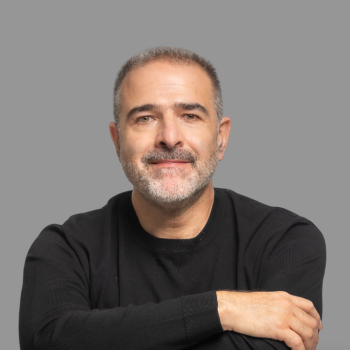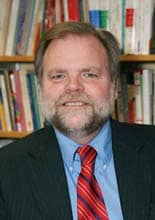 Preachers are called to be persons of prayer, spirit-persons who have been touched by God and have the vocation of awakening others to God's presence in their lives. Prayer awakens us to new possibilities for understanding God and our world along with its value in personal centering, connection with others, and intercessions that contribute to the overall well-being of others. (I happen to believe—though it's for another article—that prayer truly changes things and contributes energy and love to others at a distance, which can be a tipping point between health and illness of body, mind, and spirit.)
Preachers are called to be persons of prayer, spirit-persons who have been touched by God and have the vocation of awakening others to God's presence in their lives. Prayer awakens us to new possibilities for understanding God and our world along with its value in personal centering, connection with others, and intercessions that contribute to the overall well-being of others. (I happen to believe—though it's for another article—that prayer truly changes things and contributes energy and love to others at a distance, which can be a tipping point between health and illness of body, mind, and spirit.)
Preaching is a prayerful act from the moment we pick up the scriptures for next week's sermon or, if we are a topical preacher, choose our themes for the weeks ahead. One practice that I have found helpful in the integration of my preaching and spiritual life is the Benedictine prayer form known as lectio divina, or "holy reading."
Father Luke Dysinger of the St. Andrew's Abbey in Valyermo, California, notes that lectio divina "begins with cultivating the ability to listen deeply, to hear 'with the ear of our hearts' . . . When we read the Scriptures we should try to imitate the prophet Elijah. We should allow ourselves to become women and men who are able to listen for the still, small voice of God (1 Kgs. 19:12); the 'faint murmuring sound' which is God's word for us, God's voice touching our hearts. This gentle listening is an 'attunement' to the presence of God in that special part of God's creation which is the Scriptures."
In the traditional practice of lectio divina, we quiet our minds and hearts, so that we can read slowly and carefully, "gently listening to hear a word or phrase that is God's word for us this day." Then, we gently meditate on that word, repeating it over and over again in our mind, letting it take root in our lives. In the third step, we enter prayerfully into dialogue with God, exploring what this word or phrase means in our lives today and the wisdom God wants to communicate with us. In the fourth stage, we simply rest in God, opening to the divine movements in our lives. As Dysinger notes, "Once again we practice silence, letting go of our own words; this time simply enjoying the experience of being in the presence of God." In practicing holy reading, we don't force the scripture to fit into our way of thinking or our preconceived notions (although we can't escape our theological, denominational, and social location), but open to a deeper movement of grace that speaks in and through our thoughts, emotions, and plans. This still, small voice reveals the divine presence speaking in "sighs too deep for words" and occasionally in the interplay of divine call and human response coming to the surface of consciousness.
How might you practice lectio divina in preparing for a sermon? I suggest that early in the week, whether you choose to sit in a comfortable chair or take your sermon out for a walk, first of all find a spacious time in which to read all four lectionary passages, listening to which one speaks to you and your congregation's life. (You can use this practice on all four, but one or two scriptures would probably suffice and fit into most pastors' schedules.) Reading slowly and meditatively is the best way to begin, following God's wisdom to the "right" passage for your sermon focus.
Next, simply let the scripture soak in by reading slowly both silently and aloud. When a word, feeling, phrase, image, or piece of music emerges, just go with it . . . repeat it, sing it, dance it, visualize it, or draw it, till it becomes "yours."
Then, pray it. While this whole practice is prayerful, still take time to pause to ask God to enlighten and enliven you, to show you what this passage means in your life and the life of your congregation. Share your insights with God. Share your challenges with God. Conclude by placing your life, preaching, church, and loved ones in God's care, resting in the grace of the source of love, imagination, life, and sustenance.
Lectio divina, or holy reading, is not about performance or reaching a particular goal (even a good sermon), but experiencing God's presence in all its wonder, beauty, and inspiration. Having been touched by God, the preacher can touch her or his congregation with timely and life-transforming words.
For more on lectio divina, see "Accepting the Embrace of God: The Ancient Art of Lectio Divina" by Fr. Luke Dysinger, O.S.B and Norvene Vest, Preferring Christ: A Devotional Commentary on the Rule of St. Benedict and No Moment Too Small: Rhythms of Silence, Prayer and Holy Reading.
2/9/2011 5:00:00 AM





